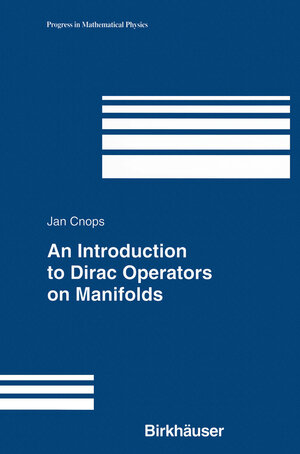
„The text should be accessible for senior undergraduate and graduate students. It requires very little previous knowledge of the domains covered. More advanced readers could perhaps appreciate the new approach to the theory as well as some new results on boundary value theory.“
—Mathematical Reviews
„This book gives an introduction to Dirac operators on manifolds for readers with little knowledge in differential geometry and analysis.... Compared to other books treating similar subjects... the present book is considerably more elementary and is mostly restricted to results that can easily be obtained out of the definitions.“
—Zentralblatt Math
„The extraordinary importance of Dirac operators in variuos domains of mathematics and physics is well known. So, although there are some remakrable monographs on Dirac operators, the high number of recent papers covering several subjects needs periodical surveys...
The book is excellent for beginners offering several ideas of research and a global picture of a fascinating theory!“ ---Memoriile Sectiilor Stiintifice
An Introduction to Dirac Operators on Manifolds
von Jan Cnopsmathematics and physics, for example: index theory, elliptic
pseudodifferential operators, electromagnetism, particle physics, and
the representation theory of Lie groups.
In this essentially self-contained work, the basic ideas underlying
the concept of Dirac operators are explored. Starting with Clifford
algebras and the fundamentals of differential geometry, the text
focuses on two main properties, namely, conformal invariance, which
determines the local behavior of the operator, and the unique
continuation property dominating its global behavior. Spin groups and
spinor bundles are covered, as well as the relations with their
classical counterparts, orthogonal groups and Clifford bundles.
The chapters on Clifford algebras and the fundamentals of
differential geometry can be used as an introduction to the above
topics, and are suitable for senior undergraduate and graduate
students. The other chapters are also accessible at this level so that
this text requires very little previous knowledge of the domains
covered. The reader will benefit, however, from some knowledge of
complex analysis, which gives the simplest example of a Dirac
operator. More advanced readers---mathematical physicists, physicists
and mathematicians from diverse areas---will appreciate the fresh
approach to the theory as well as the new results on boundary value
theory.




